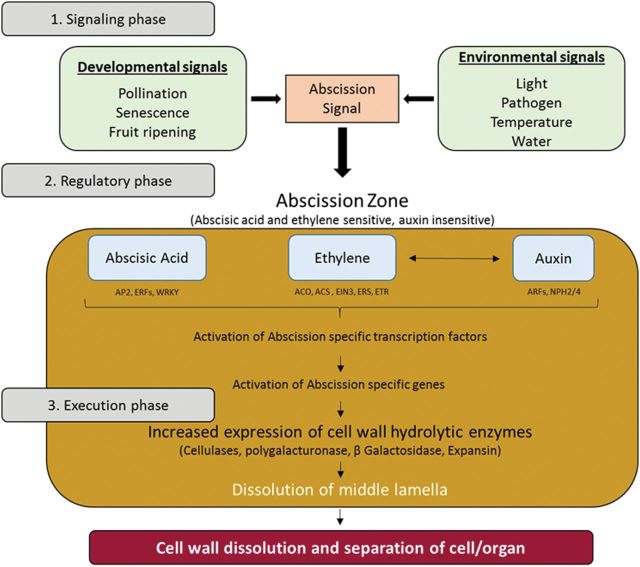Fig. 1.
A model showing major events leading up to abscission [adapted from Tripathi et al. (2008)]. The complete abscission follows three phases. In the signalling phase, formation of the AZ takes place under various developmental and environmental conditions. In the regulatory phase, the AZ is able to perceive different stimuli generated by both external and internal factors and transduced by signals resulting in ethylene/ABA sensitivity and auxin insensitivity in the cell, activating several cascades and transcriptional regulators. In the execution phase, the initiation of abscission starts with the expression of several wall-loosening agents like cellulases, polygalacturonases, or expansin. The collective actions of all these agents accelerate the dissolution of middle lamella. Finally, cell wall dissolution takes place resulting in cell/organ separation. ACO, ACC oxidase; ACS, acyl CoA synthetase; ETR, ethylene response; ERS, ethylene response sensor; EIN3, ETHYLENE INSENSITIVE 3; AP2, ARF, ERF, NPH2/4, and WRKY are transcription factors.

